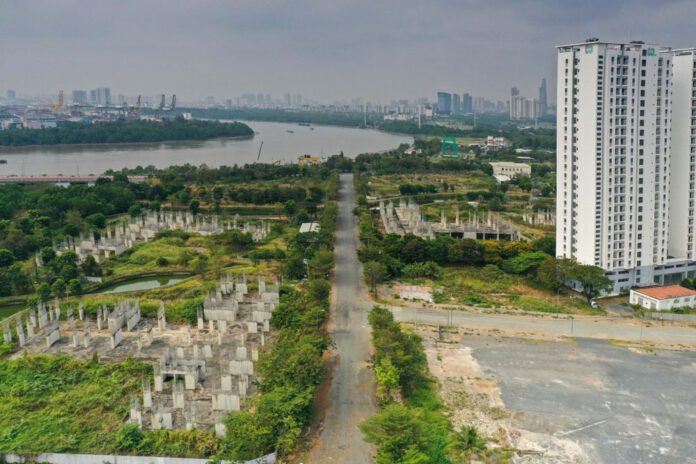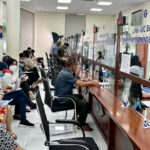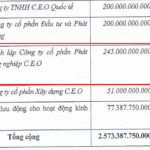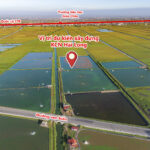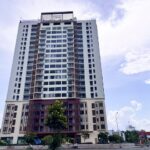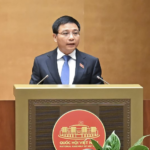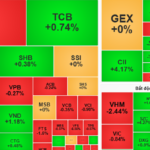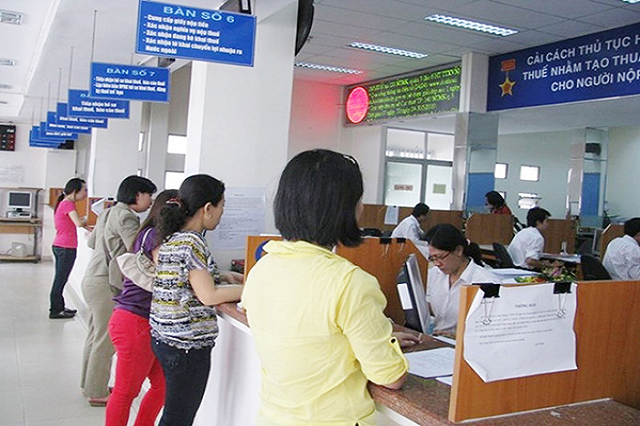The real estate market in Ho Chi Minh City and its neighboring provinces is undergoing a “transformation” and regaining its momentum with positive recovery signs after a period of stagnation. Notably, the merger of Ho Chi Minh City, Binh Duong, and Ba Ria-Vung Tau is expected to usher in a new era of growth for the regional real estate market.
Positive Shift
Ms. Ai Nghi, a long-time real estate investor from Thu Duc City, Ho Chi Minh City, has recently been spending considerable time researching land plots in Binh Duong province, especially along National Highway 13, bordering Ho Chi Minh City.
According to her, land prices in this area have been consistently rising due to planned road expansions. Moreover, with Binh Duong and Ho Chi Minh City being considered a unified entity, administrative boundaries are no longer an obstacle. For this reason, a 700-square-meter plot of land (including 150 square meters of residential land) that she once hesitated to buy for 3.7 billion VND a month ago is now offered by the landowner at an increased price of 4.3 billion VND.
It is not a coincidence that The Felix project in Thu An City, Binh Duong province, developed by C-Holdings, has attracted numerous customers to book units after just one livestream session by the company’s Chairman, Mr. Nguyen Quoc Cuong.
According to Mr. Tran Van Hung, Sales Director of C-Holdings, the fact that Binh Duong and Ho Chi Minh City will no longer have boundaries starting July 1st is one of the attractive factors for homebuyers in the project. Specifically, the company has only announced more than 1,000 apartments, but the entire basket has been booked.
Not only apartments, but the resort real estate market is also showing signs of recovery. The fact that large investors such as Sun Group and Ixora are promoting the implementation of projects in Ba Ria – Vung Tau shows that confidence is returning. Investors expect this area to become the “backyard” tourism of Ho Chi Minh City thanks to the advantage of convenient transportation connections.
Mr. Dang Quoc Viet, General Director of Smartland – a company specializing in distributing high-end resort real estate products, said that although the market has not recovered strongly as before the pandemic, the projects are now well invested, coming from reputable investors with transparent legal procedures and locations near the center of Ho Chi Minh City are highly appreciated. According to Mr. Viet, the model of coastal urban areas combining residence and resort will be the trend in the coming years.
In addition, the demand for industrial park development has created a unique direction for each locality in shaping the real estate segment. Binh Duong is a typical example, as it has identified its strength in industrial development, thanks to which projects combining industrial parks and integrated urban areas here are increasing, attracting foreign investors in particular.
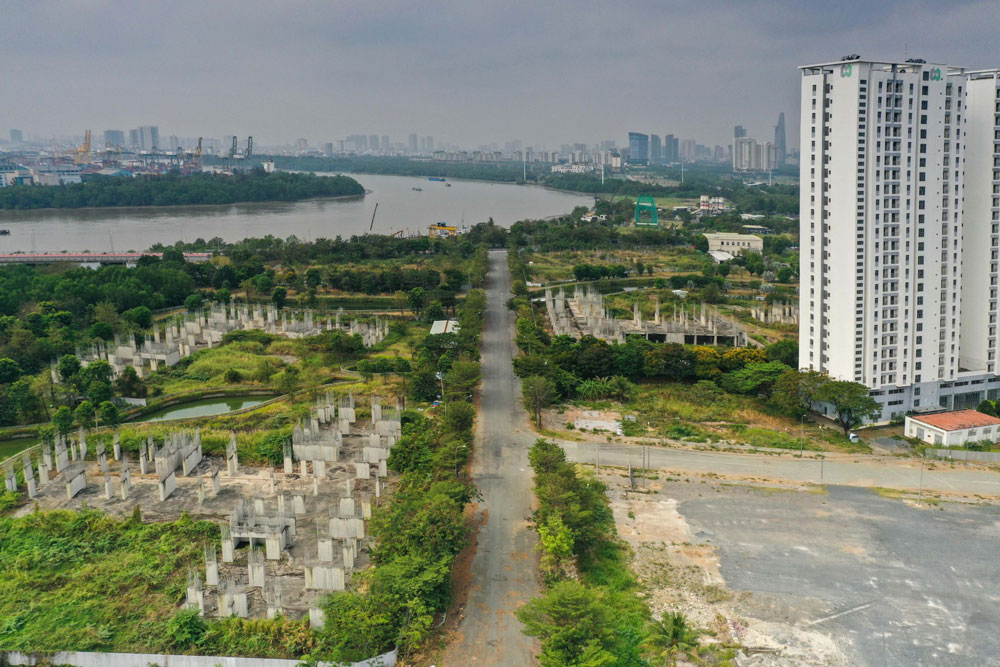
Ho Chi Minh City’s real estate market has a lot of room to grow after the administrative merger. Photo: HOANG TRIEU
Mr. Thomas Rooney, Deputy Director of Savills Hanoi’s Industrial Services, believes that if the merger and new planning are well implemented, it will pave the way for the formation of integrated urban-industrial ecosystems, attracting foreign investment that is becoming more “selective”.
“The merger of administrative units is not just about changing boundaries, but also about streamlining the apparatus, reducing fragmentation in planning, and increasing competitiveness among localities,” the expert analyzed.
In addition, the expansion of administrative boundaries will allow the new Ho Chi Minh City to plan more large industrial parks, making it easier for businesses to find land to build factories, no longer worrying about the lack of industrial land. Especially after the merger, the localities can divide the regions more clearly, supporting the development of specialized industrial parks.
“Areas that were already investment bright spots will, after the merger, have the opportunity to complement each other in terms of infrastructure, labor resources, and development orientation. This will enhance their competitiveness and position in the global value chain,” said Mr. Thomas.
Synergy in Planning and Infrastructure
Mr. Tran Quang Trung, Director of Business Development at OneHousing, assessed that 2025 would mark a completely different stage for the Vietnamese real estate market. It is not just a recovery from a stagnant period but also a leap into a new growth phase, driven by macroeconomic factors, reasonable regulatory policies, and changes in investment behavior.
In addition to the administrative merger, the market is also supported by loose monetary policies, cooling lending interest rates, large credit packages, and strong public investment and foreign investment (FDI). However, Mr. Trung also warned that the merger information could create a FOMO (fear of missing out) effect, causing investors to rush to buy land, leading to risks if price and real value are not well controlled. Therefore, buyers need to be sober-minded and consider liquidity factors, financial capacity, and the short-term and long-term value of real estate before investing.
Mr. Pham Lam, Vice President of the Vietnam Real Estate Brokerage Association, said that the administrative merger creates great opportunities for real estate developers due to the synergy in planning and infrastructure. Investors can access more land funds and develop new areas with great potential.
In the short term, the market will see “hot spots” of investment in places with strong infrastructure investment, new administrative centers, or areas with rezoning. However, investors still need to stick to their long-term strategies and avoid being caught up in herd mentality.
The merger of provinces not only creates new development space but also helps to deploy synchronous infrastructure connectivity and make legal procedures more consistent and faster. This makes it easier for investors to access and implement projects.
However, in the short term, Mr. Thomas Rooney warned that changes in boundaries would lead to certain challenges, including adjustments to land use planning and legal procedures related to the environment, construction, and investment. But in the long run, this will be a great opportunity to restructure the legal framework, improve transparency and administrative efficiency, saving time and enhancing investors’ confidence.
Buyers are no longer hesitant
Since April, many investors have simultaneously launched projects in Ho Chi Minh City and its vicinity, with a high volume of bookings. According to Mr. Ta Trung Kien, Director of News Property, investors’ confidence is returning thanks to the clear infrastructure outlook and rapid progress of key projects such as Ring Road 3, Ben Luc – Long Thanh Expressway, and connections to Nha Be, Nhon Trach, Dong Nai, and Ba Ria-Vung Tau.
A notable bright spot is the secondary apartment market. Data from the Center for Market Research and Customer Understanding of One Mount Group showed that in April 2025, the total secondary transactions nationwide reached about 7,600 units, up 67% from the previous month. In particular, the apartment segment recorded 3,400 units, the highest in 12 months and nearly triple the “bottom” in February.
Mr. Tran Minh Tien, Director of the Center for Market Research and Customer Understanding of One Mount Group, said that the recovery of the secondary market comes from three factors: strong real demand for housing, especially from young people; investment capital is flowing out of illiquid land plots and returning to apartments with clear legal status; and seasonal factors causing transactions to concentrate in March and April. Mr. Tien also emphasized that today’s buyers not only focus on price or area but also consider infrastructure connectivity, quality of life, and rental potential.
At the same time, many large-scale projects that were previously entangled in legal issues are now being resolved, paving the way for the pink book issuance and re-implementation. In Ho Chi Minh City, Novaland has resolved important obstacles related to planning and land use fees at projects such as Richstar, Botanica Premier, Victoria Village, Lakeview City, and The Water Bay. In Dong Nai, the province has also recently approved adjustments to the planning of areas belonging to Bien Hoa city, creating legal conditions for projects such as Aqua City, Long Hung, and Waterfront to continue their development.
According to Mr. Tran Khanh Quang, General Director of Viet An Hoa Company, the positive signal today comes from the synchronous coordination between governance policies and market confidence. Mid-range apartment projects in Ho Chi Minh City and its vicinity recorded good sales thanks to flexible sales policies and preferential bank interest rates. “Buyers are no longer hesitant because they clearly see that the market is going up as expected from the beginning of the year,” said Mr. Quang.
Pham Dinh
The Great Land Record Spike
“Despite the procedure remaining unchanged, many residents in Ba Ria-Vung Tau province are rushing to get their property paperwork in order due to a sense of heightened caution. This surge in property documentation is a result of individuals taking proactive measures to ensure their affairs are in order, even though there has been no alteration to the process itself.”
The Captivating “Kiều by KITA”: A Smart Investor’s Top “Candidate”
“As the real estate market shifts its focus towards long-term tangible value, investors are seeking premium apartments with a central location, solid legal foundations, comprehensive amenities, and excellent connectivity. Kieu by KITA, located at 927 Tran Hung Dao, emerges as a top priority choice to fulfill these demands.”
“A Nam Định Province District Prepares to Reclaim Land from Over 1,300 Households for Vietnam’s Largest-Ever Industrial Park, Spanning Twice the Size of Hanoi’s Central District.”
The Hai Long Industrial Park spans an impressive 1,069 hectares, which is double the size of Hanoi’s Hoan Kiem district (529 hectares). To initiate the first phase of this ambitious project, which encompasses 180 hectares, Giao Thuy district in Nam Dinh province plans to acquire land from approximately 1,300 households.
The New Developments in Ho Chi Minh City’s Southern Real Estate Market
The real estate market in the southern region of Ho Chi Minh City is experiencing a resurgence. Statistics show that, alongside the city’s eastern and western districts, this area has witnessed a significant comeback in property ventures since last year. This market revival can be largely attributed to the development of infrastructure, improved transportation connections, and rising demands.

























